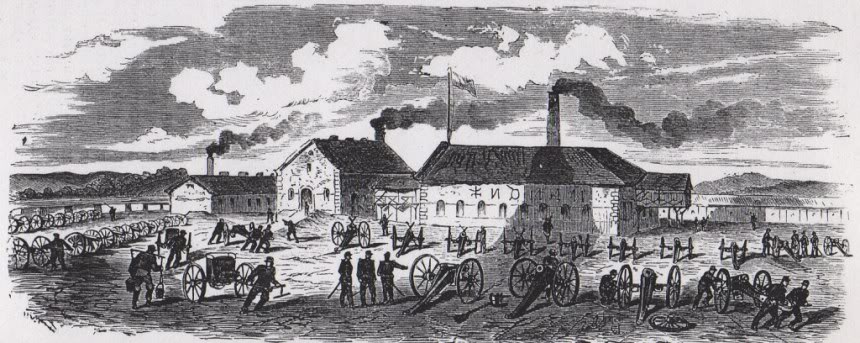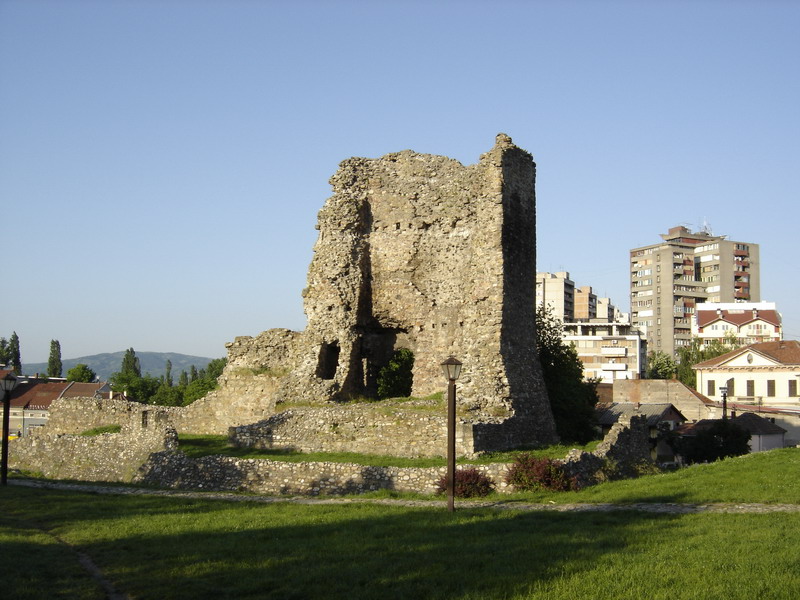|
Voljavča Monastery
Voljavča ( sr-cyr, Вољавча) is a Serbian Orthodox monastery situated in a dense forest near the Voljavča creek on the northeastern slope of the Rudnik, near the village of Stragari in central Serbia. The monastery church, dedicated to saints Michael and Gabriel, was an endowment of Mihailo Končinović, a nobleman of Despot Stefan Lazarević (r. 1402–27), reconstructed at the beginning of the 15th century on the ruins of an older church dating to 1050. The monastery is of great historical importance due to its role during the First Serbian Uprising, when the Upspring leader, Karađorđe often hid there. In the residential part of the monastery, built in 1765. was held the first meeting of the Serbian Minister Council ( sr-cyr, Правитељствујушчи совјет сербски), first executive governing organ in the History of modern Serbia. Notable people *Hadži-Ruvim Hadži-Ruvim ( sr-cyr, Хаџи-Рувим; 19 April 1752 – 29 January 1804), bo ... [...More Info...] [...Related Items...] OR: [Wikipedia] [Google] [Baidu] |
Eastern Orthodoxy
Eastern Orthodoxy, otherwise known as Eastern Orthodox Christianity or Byzantine Christianity, is one of the three main Branches of Christianity, branches of Chalcedonian Christianity, alongside Catholic Church, Catholicism and Protestantism. Like the Pentarchy of the first millennium, the mainstream (or "Canon law of the Eastern Orthodox Church, canonical") Eastern Orthodox Church is Organization of the Eastern Orthodox Church, organised into autocephalous churches independent from each other. In the 21st century, the Organization of the Eastern Orthodox Church#Autocephalous Eastern Orthodox churches, number of mainstream autocephalous churches is seventeen; there also exist Organization of the Eastern Orthodox Church#Unrecognised churches, autocephalous churches unrecognized by those mainstream ones. Autocephalous churches choose their own Primate (bishop), primate. Autocephalous churches can have Ecclesiastical jurisdiction, jurisdiction (authority) over other churches, som ... [...More Info...] [...Related Items...] OR: [Wikipedia] [Google] [Baidu] |
Stragari
Stragari ( sr-cyr, Страгари) is a rural settlement within the City of Kragujevac. Geography It is located at 250m above sea level, 30km northwest of Kragujevac and about 120km south of state capital, Belgrade. Stragari lies at the confluence of the Srebrnica River intо Jasenica River, on the northeastern side of the Rudnik Mountain (highest peak - Cvijić's peak, 1,132m). Stragari is the place of one of the biggest asbestos mines in Europe. History In 1425 Stefan Lazarević held a major meeting at Srebrnica noble residence in Stragari area, because of the question on who would succeed him to the Serb throne (he had no children), and he chose Đurađ Branković. Stragari was mentioned for the first time in Turkish census documentation in 1476 as Strgar. At that time, Stragari had only 39 households. From 1717 to 1739 the town saw a large influx of Austrians. Voljavča monastery in Stragari played a notable role in the First Serbian Uprising. Karađorđe and ... [...More Info...] [...Related Items...] OR: [Wikipedia] [Google] [Baidu] |
Kragujevac
Kragujevac ( sr-Cyrl, Крагујевац, ) is the List of cities in Serbia, fourth largest city in Serbia and the administrative centre of the Šumadija District. It is the historical centre of the geographical region of Šumadija in central Serbia, and is situated on the banks of the Lepenica (Great Morava), Lepenica River. According to the 2022 census, City of Kragujevac has 171,186 inhabitants. Kragujevac was the first capital of modern Serbia and the first constitution in the Balkans, the Sretenje Constitution, was proclaimed in the city in 1835. A unit of the Scottish Women's Hospitals for Foreign Service was located there in World War I. During the Second World War, Kragujevac was the site of a Kragujevac massacre, massacre by the Nazis in which 2,778 Serb men and boys were killed. Modern Kragujevac is known for its large munitions (Zastava Arms) and automobile (Fiat Serbia) industries, as well as its status as an education centre housing the University of Kragujevac, one ... [...More Info...] [...Related Items...] OR: [Wikipedia] [Google] [Baidu] |
11th Century
The 11th century is the period from 1001 (represented by the Roman numerals MI) through 1100 (MC) in accordance with the Julian calendar, and the 1st century of the 2nd millennium. In the history of Europe, this period is considered the early part of the High Middle Ages. There was, after a brief ascendancy, a sudden decline of Byzantine Empire, Byzantine power and a rise of Normans, Norman domination over much of Europe, along with the prominent role in Europe of notably influential popes. Christendom experienced a formal schism in this century which had been developing over previous centuries between the Latin West and Byzantine East, causing a split in its two largest denominations to this day: Roman Catholicism and Eastern Orthodoxy. In Song dynasty China and the Islamic Golden Age, classical Islamic world, this century marked the high point for both classical History of science and technology in China, Chinese civilization, science and Technology of the Song dynasty, techn ... [...More Info...] [...Related Items...] OR: [Wikipedia] [Google] [Baidu] |
Serbian Orthodox
The Serbian Orthodox Church ( sr-Cyrl-Latn, Српска православна црква, Srpska pravoslavna crkva) is one of the autocephalous (ecclesiastically independent) Eastern Orthodox Christian churches. The majority of the population in Serbia, Montenegro and Republika Srpska of Bosnia and Herzegovina are baptised members of the Serbian Orthodox Church. It is organized into metropolitanates and eparchies, located primarily in Serbia, Bosnia and Herzegovina, Montenegro, and Croatia. Other congregations are located in the Serb diaspora. The Serbian Patriarch serves as first among equals in his church. The current patriarch is Porfirije, enthroned on 19 February 2021. The Church achieved autocephalous status in 1219, under the leadership of Saint Sava, becoming the independent Archbishopric of Žiča. Its status was elevated to that of a patriarchate in 1346, and was subsequently known as the Serbian Patriarchate of Peć. This patriarchate was abolished by ... [...More Info...] [...Related Items...] OR: [Wikipedia] [Google] [Baidu] |
Monastery
A monastery is a building or complex of buildings comprising the domestic quarters and workplaces of Monasticism, monastics, monks or nuns, whether living in Cenobitic monasticism, communities or alone (hermits). A monastery generally includes a place reserved for prayer which may be a chapel, Church (building), church, or temple, and may also serve as an Oratory (worship), oratory, or in the case of Cenobium, communities anything from a single building housing only one senior and two or three junior monks or nuns, to vast complexes and estates housing tens or hundreds. A monastery complex typically comprises a number of buildings which include a church, dormitory, cloister, refectory, library, Wiktionary:balneary, balneary and Hospital, infirmary and outlying Monastic grange, granges. Depending on the location, the monastic order and the occupation of its inhabitants, the complex may also include a wide range of buildings that facilitate self-sufficiency and service to the commun ... [...More Info...] [...Related Items...] OR: [Wikipedia] [Google] [Baidu] |
Rudnik (mountain)
Rudnik (Serbian Cyrillic: Рудник, ) is a mountains of Serbia, mountain in central Serbia, near the town of Gornji Milanovac. Its highest peak ''Cvijićev vrh'', named after geologist and biologist Jovan Cvijić, has an elevation of 1,132 meters above sea level. It has several other peaks over 1000 m: Srednji Šturac, Mali Šturac, Molitve, Paljevine and Marijanac. wikt:rudnik#Serbo-Croatian, ''Rudnik'' literally means 'Mining, mine' in Serbian language, Serbian, apparently referring to the mountain's rich mineral resources. The name is probably a testament to the mining activity associated with the mountain throughout several millennia. History The archaeological site of Belovode on the Rudnik mountain contains the world's oldest reliably dated evidence of copper smelting at high temperature, from 5,000 BCE. Before the arrival of the Ancient Rome, Romans, the area was inhabited by the Illyrians, followed by the Celts. The first Serbian dinar with Cyrillic insc ... [...More Info...] [...Related Items...] OR: [Wikipedia] [Google] [Baidu] |
Stefan Lazarević
Stefan Lazarević ( sr-Cyrl, Стефан Лазаревић, 1377 – 19 July 1427), also known as Stefan the Tall (), was a Serbian ruler as prince (1389–1402) and Despot (court title), despot (1402–1427). He was also a diplomat, legislator, ktetor, patron of the arts, poet and one of the founding members of the Order of the Dragon. The son of Prince Lazar Hrebeljanović, he was regarded as one of the finest knights and military leaders of his time. After the death of his father Battle of Kosovo, at Kosovo (1389), he became ruler of Moravian Serbia and ruled with his mother Princess Milica of Serbia, Milica (a Nemanjić dynasty, Nemanjić), until he reached adulthood in 1393. Stefan led troops in several battles as an Ottoman Empire, Ottoman vassal, until asserting independence after receiving the title of ''despot'' from the Byzantine Empire, Byzantines in 1402. Becoming a Hungarian ally in 1403–04, he received large possessions, including the important Belgrade and Gol ... [...More Info...] [...Related Items...] OR: [Wikipedia] [Google] [Baidu] |
First Serbian Uprising
The First Serbian Uprising (; sr-Cyrl, Први српски устанак; ) was an uprising of Serbs in Orašac (Aranđelovac), Orašac against the Ottoman Empire from 14 February 1804 to 7 October 1813. The uprising began as a local revolt against the Dahije, renegade janissary officers who had seized power in a coup d'état against the Ottoman sultan. It later evolved into a Wars of national liberation, war for independence, known as the Serbian Revolution, after more than three centuries of Ottoman Empire rule and brief Austrian occupations. In 1801, the Janissary commanders assassinated the Ottoman Empire, Ottoman Pasha and took control of the Pashalik of Belgrade, ruling it independently of the Ottoman Sultan. This led to a period of tyranny, during which the Janissaries suspended the rights previously granted to the Serbs by the Sultan. They also raised taxes, imposed forced labor, forced labour, and made other changes that negatively affected the Serbs. In 1804, the Ja ... [...More Info...] [...Related Items...] OR: [Wikipedia] [Google] [Baidu] |
Karađorđe
Đorđe Petrović (; ; – ), known by the sobriquet Karađorđe (; ), was a Serbian revolutionary leader who led a struggle against the Ottoman Empire during the First Serbian Uprising. He held the title of Grand Vožd of Serbia from 14 February 1804 to 3 October 1813. Born into an impoverished family in the Šumadija region of Ottoman Serbia, Karađorđe distinguished himself during the Austro-Turkish War of 1788–1791 as a member of the Serbian Free Corps, a militia of Habsburg and Ottoman Serbs, armed and trained by the Austrians. Fearing retribution following the Austrians' and Serb rebels' defeat in 1791, he and his family fled to the Austrian Empire, where they lived until 1794, when a general amnesty was declared. Karađorđe subsequently returned to Šumadija and became a livestock merchant. In 1796, the rogue governor of the Sanjak of Vidin, Osman Pazvantoğlu, invaded the Pashalik of Belgrade, and Karađorđe fought alongside the Ottomans to quash the inc ... [...More Info...] [...Related Items...] OR: [Wikipedia] [Google] [Baidu] |
History Of The Modern Serbian State
History is the systematic study of the past, focusing primarily on the human past. As an academic discipline, it analyses and interprets evidence to construct narratives about what happened and explain why it happened. Some theorists categorize history as a social science, while others see it as part of the humanities or consider it a hybrid discipline. Similar debates surround the purpose of history—for example, whether its main aim is theoretical, to uncover the truth, or practical, to learn lessons from the past. In a more general sense, the term ''history'' refers not to an academic field but to the past itself, times in the past, or to individual texts about the past. Historical research relies on primary and secondary sources to reconstruct past events and validate interpretations. Source criticism is used to evaluate these sources, assessing their authenticity, content, and reliability. Historians strive to integrate the perspectives of several sources to develop a ... [...More Info...] [...Related Items...] OR: [Wikipedia] [Google] [Baidu] |








